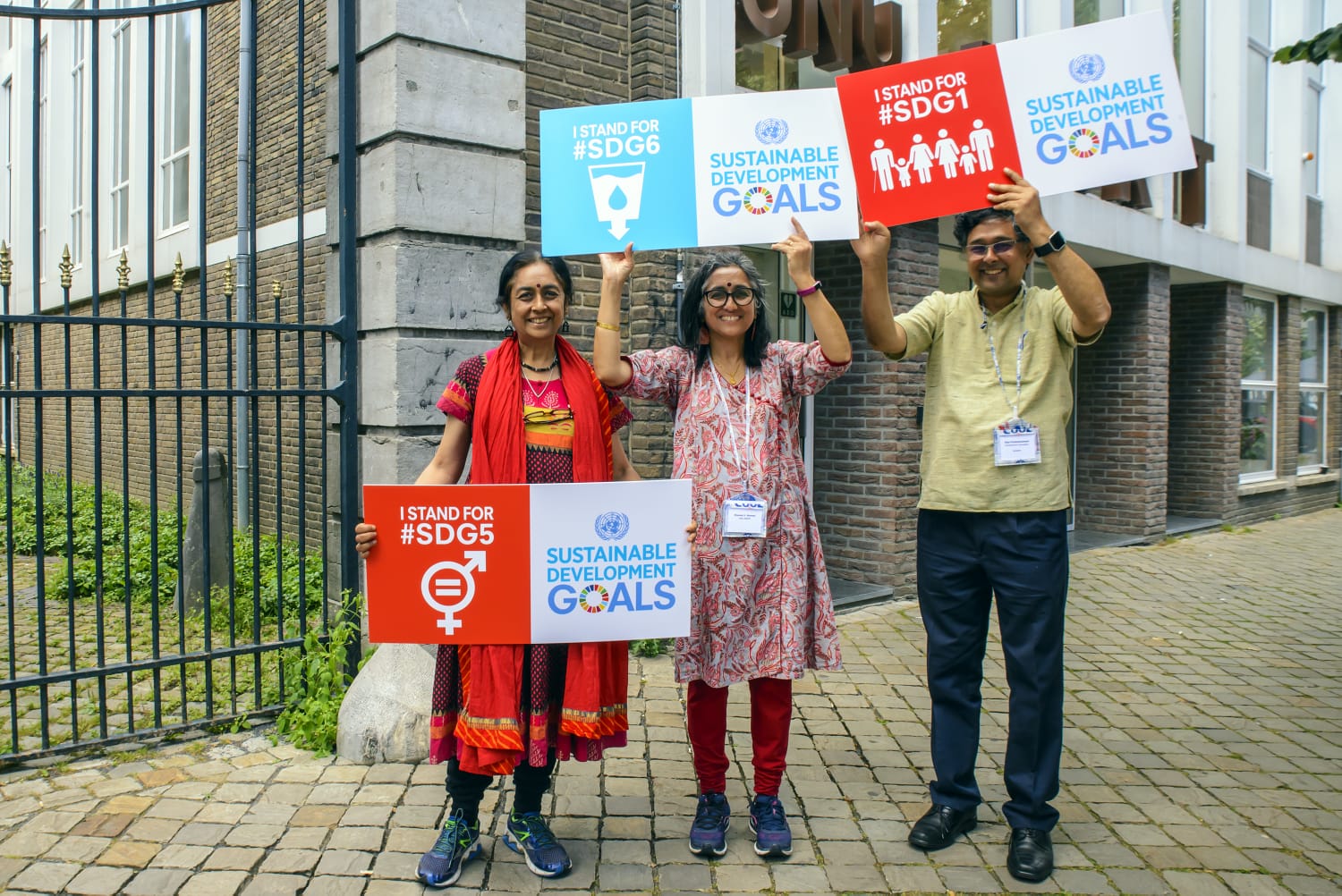Tailored to: Companies, national and international organisations & government institutions
Our consulting drives initiatives across a broad spectrum of global challenges to shape the transition towards sustainable development. While our project services cover a range of different activities, we always utilise a system’s approach to develop holistic and uniquely tailored solutions for client needs.

We offer hands-on support throughout the entire lifecycle of projects. Our services encompass the development of strategic roadmaps to achieve project objectives, project impact evaluation, identifying areas for improvement and potential trade-offs to ensure sustainable outcomes. Our preferred methodology is action research.
Example 1: Project Support
Client: International Finance Corporation
Client’s Challenge: A city is producing 550 MLD (million litres a day) of sewage water, while being water stressed. It is surrounded by water stressed agricultural lands. Client requested a feasibility report for the use of treated sewage water.
How did we tackle the project? Our work consisted of a three-pronged approach. First, we reformulated the questions of this complex problem to highlight its economic, environmental and social dimensions, i.e. the sustainability trinity and identify their inter-connections and trade offs. Second, we conducted a technical analysis to determine if and through what technology sewage water can be treated to maximize output of clean water and minimize cost. Third, we conducted a stakeholder analysis to map out all the relevant actors and their respective roles. Subsequently, stakeholders were engaged in multi-stakeholder forums, including a number of workshops, in order to form consensus around the issue. as follows:
This is one of our typical ways to work towards the building of a shared understanding of the problem in order to choose between the different possible solution designs.
Outcome of our work: Our proposed solution design was approved for implementation. It comprised an initial allocation of about 250 MLD to be treated and the reclaimed water to be integrated with a drip irrigation system covering 2000 hectres of agricultural land. Drip irrigation in lieu of conventional irrigation reduced loss by evaporation by 70-80 percent as compared to surface irrigation. The solution design also entailed creating a framework for determining which kind of crops are most amenable and what should be the farming practices.
Example 2: Program design/Policy analysis
Translating evolving evidence into effective program design and policy is key to maximizing the impact of investments and collective action in global development. S4S helps its clients develop effective organizational, programmatic and investment policies tailored to their strategic objectives. Given the multi-stakeholder nature of many of our clients, we take a participatory approach and are experts in facilitating policy consultations to ensure broad ownership. We also support our clients in translating policies into business processes and systems, and conduct training to facilitate smooth implementation. Beyond our work with individual clients, we conduct and publish policy research on financing for global development in partnership with academia.
Client: World Bank
Client’s Demand: There is an acute shortage of housing for the urban poor in India, which is not being addressed adequately by existing policy. According to the 2021 report on multidimensional poverty issued by the government, 45.25% of the Indian urban population is poor. The goal of the project was to understand how policy can be revised in an Indian state integrating contemporary practices of policy design.
How we tackled it: We first identified the system in which the problem was embedded and the systemic actors involved – especially the institutions concerned, their roles, their objectives and their interactions. Then we worked out the following research design for our desk research (documentary analysis of existing policy documents, business journals, academic literature, reports of public agencies, construction agency associations and financial institutions – with basic statistical analysis and logical argumentation) and extensive consultation with diverse stakeholders (financial institutions, government regulatory agencies, public research agencies) so that the analysis took into account:
- contextual realities;
- possible evolutions in the future;
- public purpose principles (equity, social inclusiveness);
- strengths and weaknesses of the present government programmes;
- fiscal constraints of the government;
- fiscal implications of government support;
- criteria for programme effectiveness;
- role of each stakeholder involved including beneficiary;
- ensuring accountability of each stakeholder involved including beneficiary;
- lessons that can be inferred from other countries.
Outcome of our work: Refined and added to a set of basic definitions on housing and living conditions into the policy discourse integrating notions of crowding, green spaces, distances from education institutions, market places and health care facilities. Performance indicators were proposed to detail quality of implementation and impact. Description and state of functioning of the ecosystem for access to credit for the poor were outlined, with recommendations to strengthen their capabilities and capacities. Adoption of our recommendations and their incorporation into the final housing policy released by the state government.
If you have an exciting project idea to discuss or require expert guidance, don’t hesitate to reach out to us!

